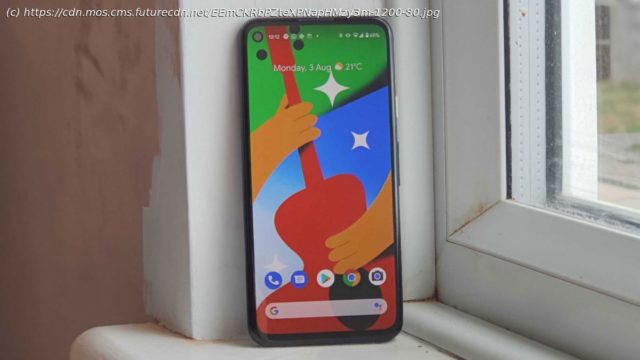The Pixel 4a won’t wow you with specs, but the cutesy handset has impressive photographic capabilities.
UPDATE: Looking for 5G on your Pixel 4a? You’re in luck, Google just unveiled a brand new version of the Google Pixel 4a with 5G onboard and better specs alongside the brand new Google Pixel 5. The Google Pixel 4a gives you the best of Google in an affordable, one-hand-friendly package. There’s slick Google Assistant integration, a clean Android interface with three years of guaranteed updates, and a seriously impressive photography experience considering the Pixel 4a has just one rear camera. However, pull out the spec sheet and compare it to similarly priced rivals and the Google Pixel 4a doesn’t seem like such a great deal, with less power, less RAM, fewer cameras, a smaller screen and no 5G connectivity — although the Pixel 4a 5G variant is coming in mere weeks with even better specs albeit at a higher price, alongside the Google Pixel 5 (which will also be 5G enabled). Battery life is mediocre, with the phone just about lasting a day on a single charge – and if you really push it you’ll be reaching for a charger come late afternoon. The design will be divisive. On the one hand it’s a cutesy, curvy polycarbonate handset that sits comfortably in the palm, and its lightweight frame makes it easy to hold and use. There’s a rear-mounted fingerprint scanner, there’s almost no screen bezel, and there’s even a headphone jack. On the other hand, it feels a little cheap, and it lacks the premium gloss of other handsets in its price bracket. If you’re thinking about getting the Google Pixel 4a you’ll need to carefully consider what’s important to you when it comes to a new smartphone. If you’re looking for maximum bang for your buck, and features galore, the Pixel 4a is unlikely to whet your appetite. That said, its compact size, clean interface and great point-and-shoot camera will appeal to those looking for an affordable, reasonably sized handset with enough grunt for social media, web browsing and emails, plus the ability to capture some excellent pictures. Check out our special Google Pixel 4a unboxing video below The Google Pixel 4a price is $349 / £349 / AU$599. There are no configuration options, there’s no, larger Pixel 4a XL, and there’s only one color: Just Black. If you want the Pixel 4a, you’ll have to sacrifice choice for that low price tag. That’s a competitive price point, and one that’s $50 / £50 / AU$50 cheaper than the launch price of its predecessor, the Google Pixel 3a. You also get more RAM (6GB vs 4GB) and more storage (128GB vs 64GB) with the Pixel 4a, so Google is giving you a decent amount of bang-for-your-buck, at least within its own ecosystem. Compared to the Google Pixel 4a 5G, which has better specs but costs more at $499 / £499 (around AU$695), the standard Pixel 4a remains a bargain. It’s also comfortably cheaper than its flagship namesakes, the Pixel 4 and Pixel 4 XL. Trouble is, the Google Pixel 4a is playing in a highly-competitive middle market, and is up against some handsets with far more impressive spec sheets – the likes of the OnePlus Nord, Realme X50 5G, Moto G 5G Plus and Mi Note 10 Lite can dazzle consumers with their multiple cameras, larger screens and 5G connectivity. While the handset itself won’t differ between regions, when you can actually get your hands on it will depend on where you are. The Google Pixel 4a release date for the US is August 20, but the rest of the world will have a longer wait. The Pixel 4a release date in Australia is September 10, while the Pixel 4a release date in the UK is all the way off on October 1 (but pre-orders are open now) – two months after the phone’s launch. Explaining the reason for the staggered release date, a Google spokesperson told TechRadar that «our supply chain was impacted by Covid-19 and we had to adjust our launch plans accordingly to ensure the safety of our employees, partners and customers.» Cute. That’s the one-word answer to ‘describe the Google Pixel 4a design’. It’s one of the more compact Android smartphones you can get hold of these days, measuring 144 x 69.4 x 8.2mm, which makes it smaller than the Pixel 3a while boasting a bigger screen. The result is a handset which is extremely easy to handle, and one-handed use is almost effortless. Those with smaller hands could still find it a bit of a stretch to reach the top of the display, but it sits comfortably in the palm. It’s light too, tipping the scales at just 143g, which makes it lighter than the Pixel 3a and the iPhone SE (which is actually smaller than the Pixel 4a). That’s due to the Pixel 4a’s polycarbonate unibody – and while it helps the handset shed some weight, this does also mean that it doesn’t look or feel particularly premium. You may not see that as an issue, especially considering the affordable price, but for the same price you can get hold of metal- and glass-covered handsets that look and feel much more premium. The plus side here is that there’s less glass to potentially smash, and the polycarbonate finish feels solid and hard-wearing. You’ll find the mint-green accented power/lock key situated conveniently under thumb or finger on the right of the handset, with a black volume rocker just below, while the SIM tray is on the opposite side – this can only hold a single SIM, but the Google Pixel 4a also comes with a built-in eSIM card. An eSIM (embedded SIM) is a digital version of the SIM card that you use to connect your phone to a network provider. The chip can be reprogrammed to suit whatever carrier you want to use; however not all carriers support eSIM, so you’ll need to check with your provider whether you’ll be able to use this function in the Pixel 4a. It’s also worth noting that eSIM functionality is only enabled for a select number of countries: the US, UK, Australia, Canada, Spain, Germany, Taiwan and Japan. On the bottom of the Pixel 4a you’ll find a USB-C 3.1 port in the center, flanked by microphone and speaker grilles. The down-firing speaker works with a second speaker just above the display to provide you with stereo sound. A feature the Google Pixel 4a has carried over from its predecessor – and something the flagship 4 series doesn’t have – is a 3.5mm headphone jack. It’s located on the top edge of the handset, allowing you to plug in your wired headphones. You don’t get a pair of earbuds in the box (unless you’re in France or Australia, where you do), but if you have a set of favored cans you can use them with the Pixel 4a without having to dig out an adapter – and with no adapter occupying the USB-C port you can charge the handset at the same time as using wired headphones. Another feature borrowed from the Pixel 3a is the rear fingerprint scanner. Google dropped fingerprint scanning for the Pixel 4 and 4 XL in favor of facial recognition, but we’re pleased to see the digit-based sensor return on the Pixel 4a. It falls comfortably under the forefinger, and recognition is fast – we didn’t experience any errors during our review period. The only minor niggle with rear-mounted fingerprint sensors is they can’t be used when the phone is placed on a desk or side table, which means you’ll have to either tap in your passcode or pattern, or pick the Pixel 4a up to reach the sensor. There’s also no face unlock support. Overall, the Pixel 4a has a minimalist design, with the centrally located fingerprint scanner and square camera block in the top-left corner the only points of note on the rear. Considering the phone has just one rear-facing camera, the size of the camera block seems a little excessive, but it’s presumably a design decision from Google as it looks to mimic the square bump on the rear of the Pixel 4 and 4 XL. On the plus side, the bump isn’t raised all that much from the rear of the phone, which means you can place it on a surface and tap away at the screen with minimal wobble. While the compact form factor of the Pixel 4a will appeal to many, in 2019 we also got the larger Pixel 3a XL, which offered much of the same specs as its smaller sibling, but with a larger 6-inch display (vs 5.






